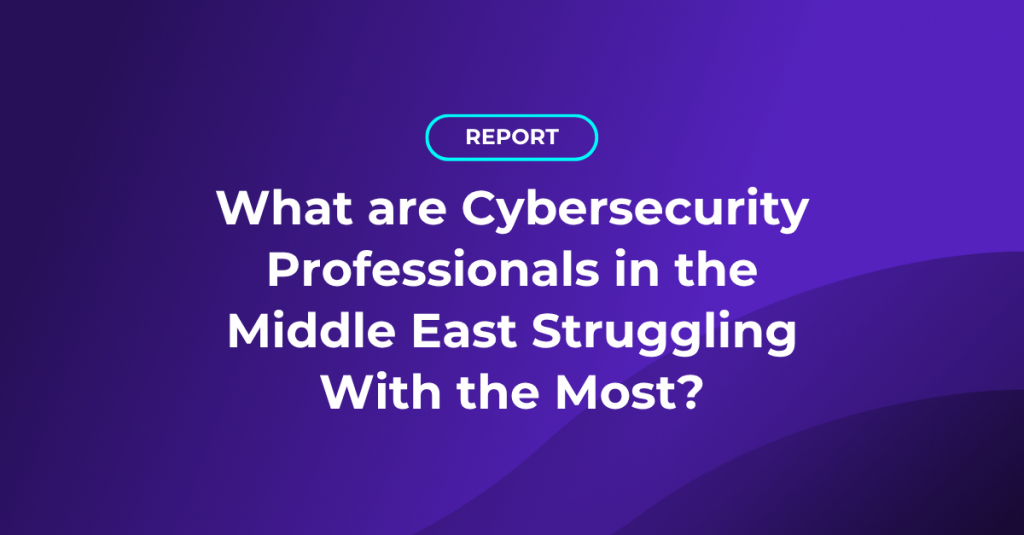At GISEC 2025, we spoke with 75 security professionals from across the Middle East — including CISOs, security analysts, and other decision-makers. We asked each of them a simple question: “What’s the biggest cybersecurity challenge in your organization today?”
The responses were diverse but clear trends emerged. Whether managing growing complexity or navigating compliance, cybersecurity specialists are facing pressure on multiple fronts.
This article highlights the top challenges cybersecurity professionals are dealing with right now and what they mean for the future of identity security.
Top 7 Reported Cybersecurity Challenges in the Middle East
These are the most frequently cited concerns, based on the number of “Yes” answers received — respondents could select multiple options:
- Staying secure and stable as the company is rapidly growing — 53.33%
- Growing number of attacks — 36%
- Lack of expertise by the IT security team — 33.33%
- Growing complexity of attacks — 33.33%
- Lack of budget for IT security projects — 25.33%
- Excessive workload on access management (passwords, digital certificates) — 18.67%
- New and stricter compliance regulations — 18.67%
What does the data really tell us?
Let’s group the data into three overarching themes that reflect the state of cybersecurity in 2025.
1. Operational Overload and Resource Constraints
Challenges:
- Staying secure and stable while growing fast — 53.33%
- Lack of expertise within the IT security team — 33.33%
- Lack of budget for cybersecurity projects — 25.33%
- Excessive workload on access management — 18.67%
What it means:
This results shows that capacity, not capability, is a critical bottleneck. It’s not that security leaders don’t know what to do — it’s that they’re outpaced by the scale and speed of business demands. Whether it’s people (skill shortages), time (manual tasks), or money (budget gaps), CISOs are being asked to secure more territory with fewer troops and tools.
What to do:
Organizations must treat security as a scaling function, not just a defensive one and that means automating repetitive processes, outsourcing non-core tasks, and ensuring security teams grow in parallel with the business.
2. Evolving Threat Landscape
Challenges:
- Growing number of attacks — 36%
- Growing complexity of attacks — 33.33%
What it means:
Volume and sophistication are rising together. Attackers aren’t just increasing frequency — they’re also adapting faster. The complexity of attacks means defenders can no longer rely on reactive strategies. The modern threat environment requires proactive, threat-informed defenses that are adaptable and integrated across systems.
What to do:
Security teams need to move beyond perimeter defense toward identity-centric, detection-ready architectures that assume compromise and focus on containing it early (e.g., via ITDR or just-in-time access controls).
3. Governance and Accountability Pressures
Challenges:
- New and stricter compliance regulations — 18.67%
What it means:
This challenge may have scored lowest, but it carries outsized business risk. Compliance is becoming a dynamic, continuous process. With new regional regulations (e.g., GDPR variants, AI-specific laws, critical infrastructure mandates), organizations must be able to demonstrate security controls in real time — not just during annual audits.
What to do:
Focus on visibility. Implement access controls that leave a trace — session logs, approval workflows, and real-time monitoring that supports both security and audit readiness.
When Security Works as a System: Modern Security Tools for Unified Protection
These aren’t theoretical concerns — they’re concrete cybersecurity challenges: an overload of credentials to manage, inefficient manual approval workflows, limited visibility into user actions, and mounting demands to demonstrate compliance.
Addressing them requires more than additional tools. It calls for streamlined processes, intelligent automation, and solutions designed to minimize risk.
That’s where solutions like Axidian Privilege (PAM), Axidian Access (IAM), Axidian Shield (ITDR), and Axidian CertiFlow (PKI management) come in — not as isolated products, but as connected layers of security that help organizations solve the problems leaders just told us they face.


